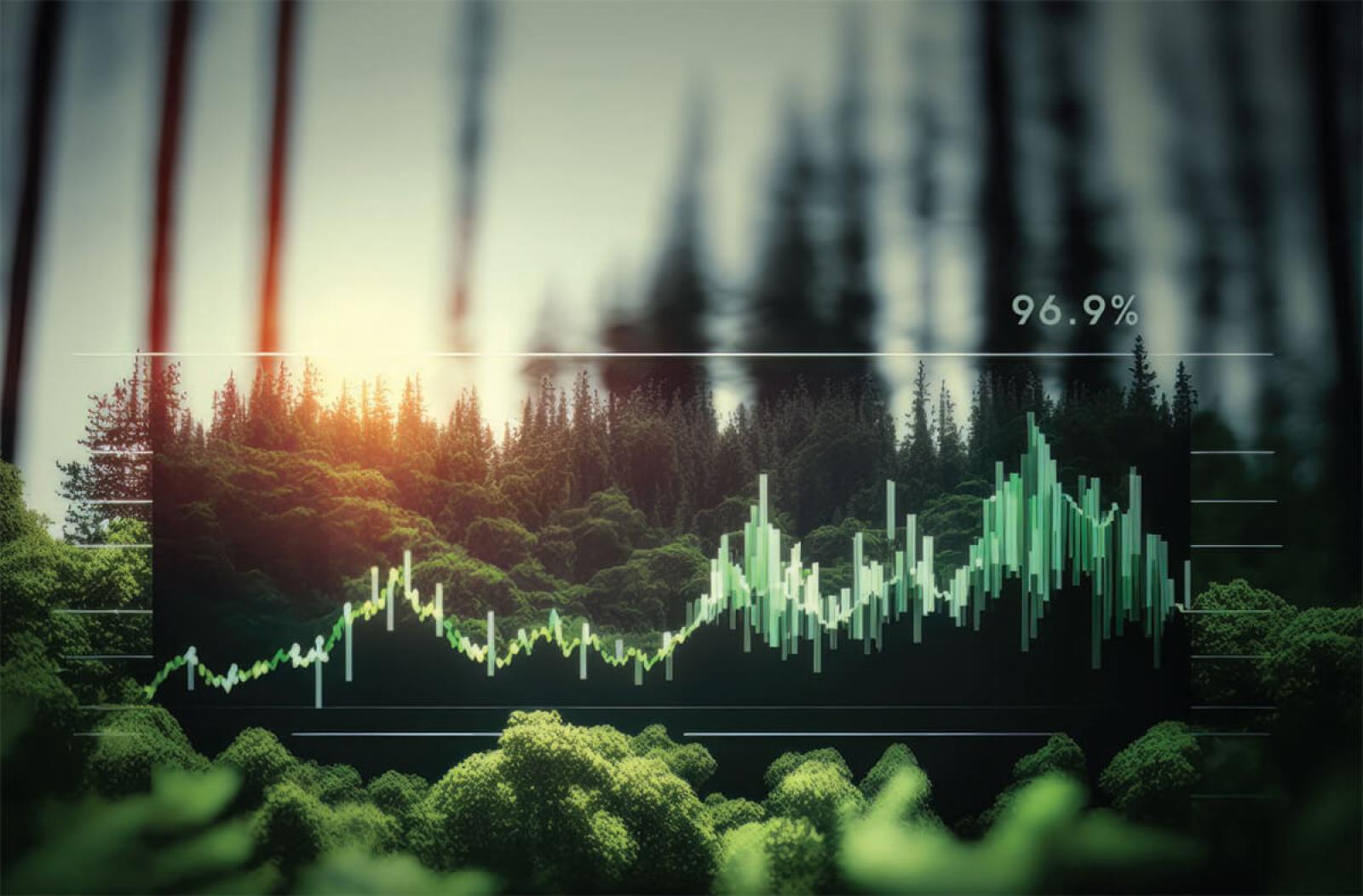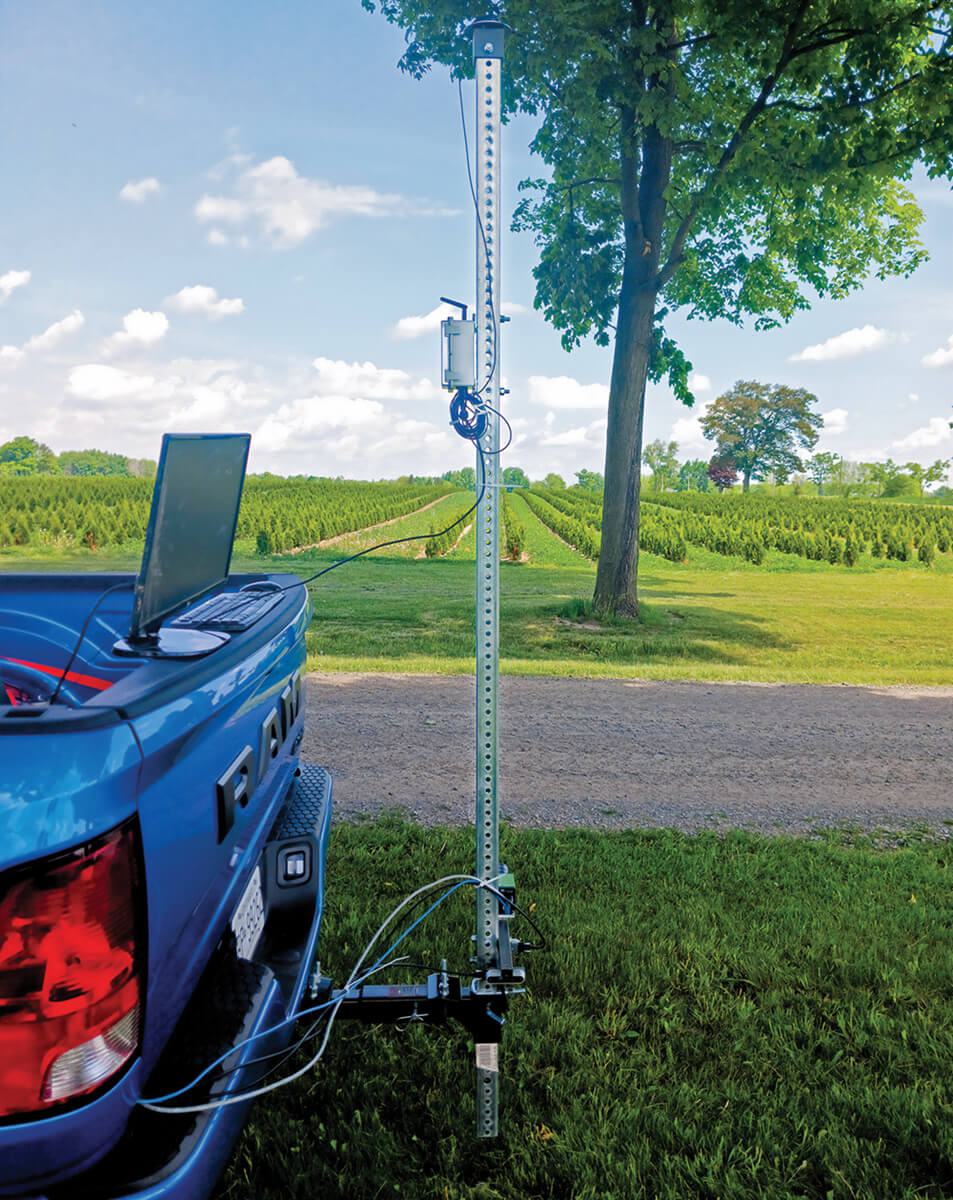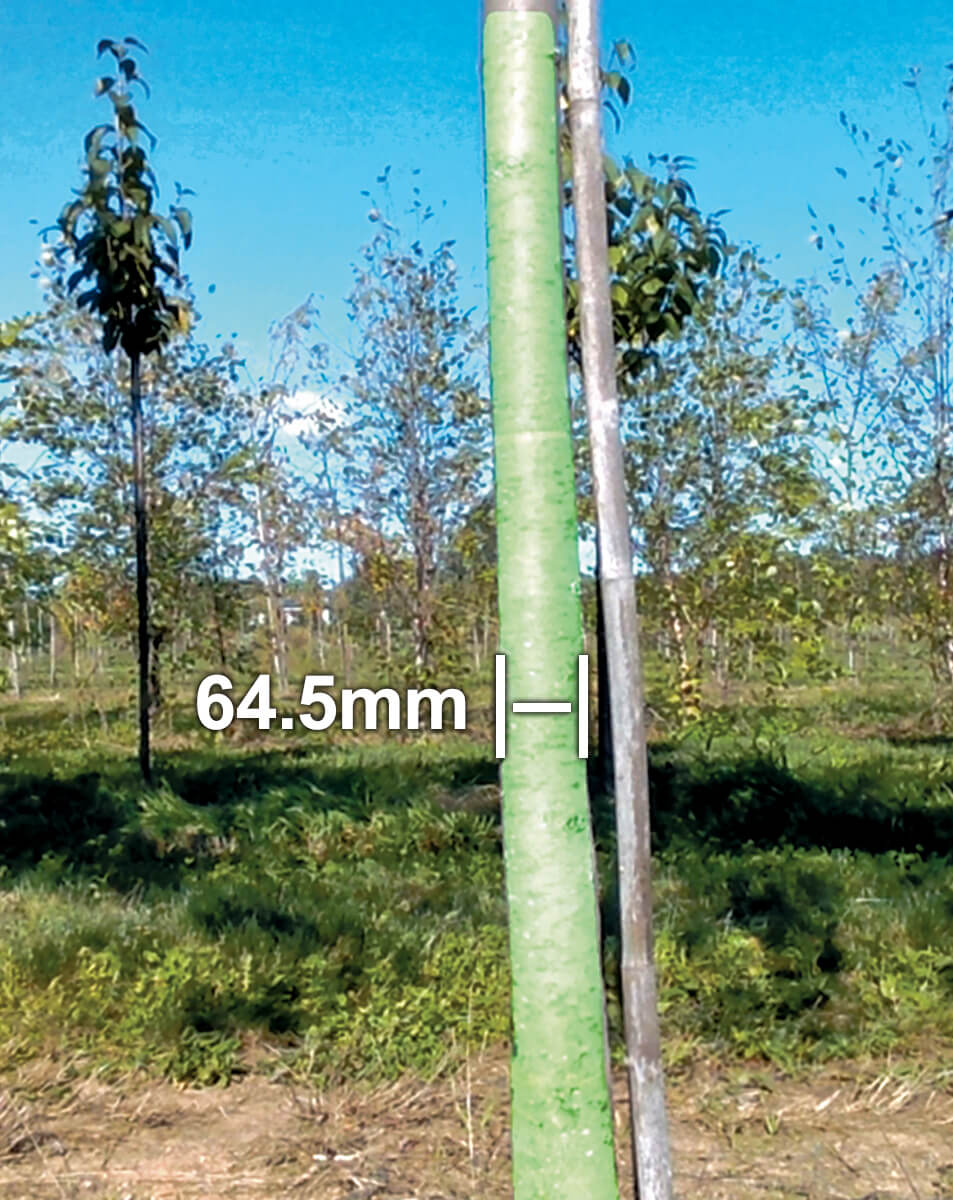March 15, 2024

Utilizing 3D vision for tree nursery caliper measurements
By David Weales (MASc), Cole Tarry (MSc), along with Dr. Medhat Moussa (PhD, PEng)
Inventory is an essential part of tree nursery management. One key aspect is measuring the caliper (or diameter) of each tree. It’s important not only to know how many trees of each caliper and species are available but also to track size from season to season or year to year, ensure that trees are growing properly and allow managers to make decisions about soil, fertilizer and water needs.
Measuring tree caliper is a time-consuming process, and for large nurseries with tens or hundreds of thousands of trees, inventory may only be possible once per season or year. Depending on the availability of labour, measuring each tree with calipers may not be possible, and nurseries may have to rely on eyeballing or taking a small subsample and extrapolating for the rest of the row or field.
Even if every tree could be measured with a caliper tool, trees may not be symmetrical around their trunk. Even if two trained workers were to measure the same tree, they may get different measurements depending on the angle and height of where they take the measurement.
To measure this variance, researchers at the University of Guelph conducted a small study where a researcher and the nursery manager measured the caliper of 25 trees using the same caliper tool. Caliper measurements were grouped in bins based on the Canadian Nursery Stock Standard guidelines. When the measurements were compared, only 64 per cent of the trees were placed in the same caliper group, while in the rest there was a difference of +/- 1 caliper group.
Automated measurements of tree caliper can help reduce or eliminate this variability. A research team headed by engineering professor Dr. Medhat Moussa developed a system that provides accurate measurements of tree caliper using cameras and a computer system that can be mounted on the back of a truck, tractor or lawn mower. This allows for measurement in a fraction of the time it takes a nursery worker to perform the task manually. In its final prototype, the system could capture images from a vehicle moving up to five km/h, about the speed of a riding lawnmower. It uses two cameras on opposite sides of the mount in order to capture two rows simultaneously. These cameras capture both colour and depth, which allows the calculation of the caliper measurement. The system also records the precise location using an embedded Real-time kinematic positioning (RTK) GPS unit, and uses advanced AI algorithms to accurately measure tree caliper even if there is occlusion or clutter in the way.
The system prototype was tested at two different nurseries while driving an average of three km/h through the rows, which allowed imaging of 3,000 trees per hour. Multiple images were collected per tree to enhance accuracy. The test demonstrated that images and extraction of tree caliper can currently be completed at a rate of 1,000 trees/hour. The current system accuracy was evaluated to be +/- 1 caliper group from a ground truth human measurement in 88.5 per cent of the cases, which is similar to the human-to-human comparison. Improving the accuracy is possible with simple steps, like using poles with distinct colour and ensuring plant or cover crop growth near the base of the tree is kept to a minimum so that the camera has a completely unobstructed view of the area where the measurement will be taken.
In the future, nurseries have also expressed interest in using this system to determine the grade and species of each tree. Tree grading is more difficult than caliper measurement as it is more of a subjective metric, but with assistance from growers, it could be possible to use the system’s AI models to learn tree grading. RFID tags can also be used to label groups of trees by species.
For more information about this research, please reach out to David Weales at dweales@uoguelph.ca.
This research is funded by the Ontario Agri-Food Innovation Alliance, a collaboration between the Government of Ontario and the University of Guelph.
Inventory is an essential part of tree nursery management. One key aspect is measuring the caliper (or diameter) of each tree. It’s important not only to know how many trees of each caliper and species are available but also to track size from season to season or year to year, ensure that trees are growing properly and allow managers to make decisions about soil, fertilizer and water needs.
Measuring tree caliper is a time-consuming process, and for large nurseries with tens or hundreds of thousands of trees, inventory may only be possible once per season or year. Depending on the availability of labour, measuring each tree with calipers may not be possible, and nurseries may have to rely on eyeballing or taking a small subsample and extrapolating for the rest of the row or field.
Even if every tree could be measured with a caliper tool, trees may not be symmetrical around their trunk. Even if two trained workers were to measure the same tree, they may get different measurements depending on the angle and height of where they take the measurement.
To measure this variance, researchers at the University of Guelph conducted a small study where a researcher and the nursery manager measured the caliper of 25 trees using the same caliper tool. Caliper measurements were grouped in bins based on the Canadian Nursery Stock Standard guidelines. When the measurements were compared, only 64 per cent of the trees were placed in the same caliper group, while in the rest there was a difference of +/- 1 caliper group.
The system prototype was tested at two different nurseries while driving an average of three km/h through the rows, which allowed imaging of 3,000 trees per hour. Multiple images were collected per tree to enhance accuracy. The test demonstrated that images and extraction of tree caliper can currently be completed at a rate of 1,000 trees/hour. The current system accuracy was evaluated to be +/- 1 caliper group from a ground truth human measurement in 88.5 per cent of the cases, which is similar to the human-to-human comparison. Improving the accuracy is possible with simple steps, like using poles with distinct colour and ensuring plant or cover crop growth near the base of the tree is kept to a minimum so that the camera has a completely unobstructed view of the area where the measurement will be taken.
In the future, nurseries have also expressed interest in using this system to determine the grade and species of each tree. Tree grading is more difficult than caliper measurement as it is more of a subjective metric, but with assistance from growers, it could be possible to use the system’s AI models to learn tree grading. RFID tags can also be used to label groups of trees by species.
For more information about this research, please reach out to David Weales at dweales@uoguelph.ca.
This research is funded by the Ontario Agri-Food Innovation Alliance, a collaboration between the Government of Ontario and the University of Guelph.

